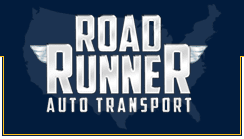
The trusted name in vehicle shipping for over 30 years!
- Track a Shipment
- Dealer Login
- Carrier Login
Speak with a shipping expert
(888) 777-2123

Leasing or Buying a Vehicle: Look both Ways before Crossing
Posted on 06/25/2015

If you’ve never leased a vehicle before, think of it as renting a car for a long time – typically three to five years. There are short term leases that are only up to 24 months. If you desire to get out of a lease early, you can explore lease swapping options where someone will take over your lease for you. A longer term lease is typically three to five years with four years being the average.
Why would anyone lease? Years ago, leasing was a way for companies to provide an incentive for their employees; there were also tax deductible benefits, as well. Over time, more and more individuals began exploring the option of leasing.
Owning your own car, however, has been around since the beginning of the automobile. It is a feeling of accomplishment and a privilege to own your own vehicle.
Leasing or Buying: The Consumer’s Choice
When it comes down to the final choice, it is a matter of preference, of course, but knowing the down side of leasing before you choose is a wise choice.
Ownership – When you buy a car, at the end of your term you own that vehicle outright. This is not the case with a lease. You have to return the vehicle at the end of the lease term unless you opt to purchase the vehicle. If the numbers don’t crunch in your favor, chances are that you will return the vehicle and watch as the fees rise. Moreover, finding a lease swap should want to terminate early is just more work for you.
Fees – There are fees right from the onset when you lease a vehicle, which can potentially include a deposit, down payment, state taxes and other miscellaneous fees. With your own vehicle, you get to pick and choose how much you will put down as your down payment. Your money is your money to do with as you please. You don’t have to fit into a certain set of rules from the dealer and the leasing company.
Control – Have you owned a vehicle only to notice right away things that bother you? For example, the rear window may be smaller in a newer vehicle than it was in your ten-year-old car. You may not like that. There may be decorative features that actually act as blind spots in a newer vehicle that you did not know about until you became more acclimated with it.
When you lease a vehicle, you have limited choices. If you break the lease, you can be sure that you will be paying some hefty fees such as early termination fees. With your own vehicle, you get to make a choice at any given time to sell privately or trade it in for something that does work for you. With a lease, you typically have to wait it out.
Financial – At the end of your payment term for owning a vehicle, you have the bonus of having the ability to sell the vehicle and reap the equity rewards. With a lease, there are almost always pings, dents or nicks that you have to account for when turning it in at the end of the term.
Freedom – When you own your own vehicle, you have freedom. If you lease, you are watching how many miles you go on each trip and probably getting a little carried away with keeping track of the mileage while running your errands, as well. You may find yourself making a list at the beginning of each week of exactly what errands are necessary and not veering from that list. There’s not a lot of freedom in that.
If you love a good road trip, chances are you will have to pass as you don’t want to add any more mileage to your lease. When you own your own car, you have the freedom to ship your vehicle to and from as you like, then hit the road and see the world.
The Perks – One of the perks – for some it is one of the biggest – is in being able to custom pinstripe or paint and detail your vehicle as you see fit. You may not have an interest in doing so in the beginning, but over the course of three to five years, things change, tastes change and times change. You can only do this with your own vehicle and not on a lease.
The Paperwork and the Fine Print – Leasing a car can be a complicated issue. There are many deals and, of course, there is the fine print. Be sure you know what you are doing before you head in to sign on the dotted line. When you buy your car, it’s more of a straight-forward process. Depending upon your credit and the term you choose, that’s how much your monthly payment will reflect, for the most part.
While leasing may be the wave of the future, it may not be what’s best for you. Knowing all the little things may make a difference when it comes to making this big decision. After all, buying a car is a big deal. While everything might sound good on that commercial you heard, the experience can be quite different.
Instant Car Shipping Quote
Calculate your car shipping rate in 3 easy steps!
Leasing or Buying a Vehicle: Look both Ways before Crossing
Posted on 06/25/2015

If you’ve never leased a vehicle before, think of it as renting a car for a long time – typically three to five years. There are short term leases that are only up to 24 months. If you desire to get out of a lease early, you can explore lease swapping options where someone will take over your lease for you. A longer term lease is typically three to five years with four years being the average.
Why would anyone lease? Years ago, leasing was a way for companies to provide an incentive for their employees; there were also tax deductible benefits, as well. Over time, more and more individuals began exploring the option of leasing.
Owning your own car, however, has been around since the beginning of the automobile. It is a feeling of accomplishment and a privilege to own your own vehicle.
Leasing or Buying: The Consumer’s Choice
When it comes down to the final choice, it is a matter of preference, of course, but knowing the down side of leasing before you choose is a wise choice.
Ownership – When you buy a car, at the end of your term you own that vehicle outright. This is not the case with a lease. You have to return the vehicle at the end of the lease term unless you opt to purchase the vehicle. If the numbers don’t crunch in your favor, chances are that you will return the vehicle and watch as the fees rise. Moreover, finding a lease swap should want to terminate early is just more work for you.
Fees – There are fees right from the onset when you lease a vehicle, which can potentially include a deposit, down payment, state taxes and other miscellaneous fees. With your own vehicle, you get to pick and choose how much you will put down as your down payment. Your money is your money to do with as you please. You don’t have to fit into a certain set of rules from the dealer and the leasing company.
Control – Have you owned a vehicle only to notice right away things that bother you? For example, the rear window may be smaller in a newer vehicle than it was in your ten-year-old car. You may not like that. There may be decorative features that actually act as blind spots in a newer vehicle that you did not know about until you became more acclimated with it.
When you lease a vehicle, you have limited choices. If you break the lease, you can be sure that you will be paying some hefty fees such as early termination fees. With your own vehicle, you get to make a choice at any given time to sell privately or trade it in for something that does work for you. With a lease, you typically have to wait it out.
Financial – At the end of your payment term for owning a vehicle, you have the bonus of having the ability to sell the vehicle and reap the equity rewards. With a lease, there are almost always pings, dents or nicks that you have to account for when turning it in at the end of the term.
Freedom – When you own your own vehicle, you have freedom. If you lease, you are watching how many miles you go on each trip and probably getting a little carried away with keeping track of the mileage while running your errands, as well. You may find yourself making a list at the beginning of each week of exactly what errands are necessary and not veering from that list. There’s not a lot of freedom in that.
If you love a good road trip, chances are you will have to pass as you don’t want to add any more mileage to your lease. When you own your own car, you have the freedom to ship your vehicle to and from as you like, then hit the road and see the world.
The Perks – One of the perks – for some it is one of the biggest – is in being able to custom pinstripe or paint and detail your vehicle as you see fit. You may not have an interest in doing so in the beginning, but over the course of three to five years, things change, tastes change and times change. You can only do this with your own vehicle and not on a lease.
The Paperwork and the Fine Print – Leasing a car can be a complicated issue. There are many deals and, of course, there is the fine print. Be sure you know what you are doing before you head in to sign on the dotted line. When you buy your car, it’s more of a straight-forward process. Depending upon your credit and the term you choose, that’s how much your monthly payment will reflect, for the most part.
While leasing may be the wave of the future, it may not be what’s best for you. Knowing all the little things may make a difference when it comes to making this big decision. After all, buying a car is a big deal. While everything might sound good on that commercial you heard, the experience can be quite different.
"Save time looking and just call Roadrunner Auto Transport - they truly helped make my move easier!"
Trish A.
Miami, FL


"This is our 3rd time shipping with RoadRunner and we've had nothing but good experiences - Thank you RoadRunner!"
Charles K.
San Antonio, TX


"Out of all the car shipping companies we spoke with, RoadRunner was the most professional and knowledgable."
Corey L.
Boston, MA


"I couldn't have been happier with the service provided by RoadRunner to transport my car from CA to NY"
Deborah B.
Long Beach, CA


Frequently Asked Questions
Get answers to some of the most commonly asked questions about the vehicle transportation process.








